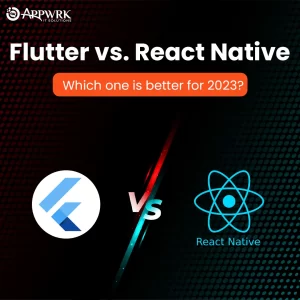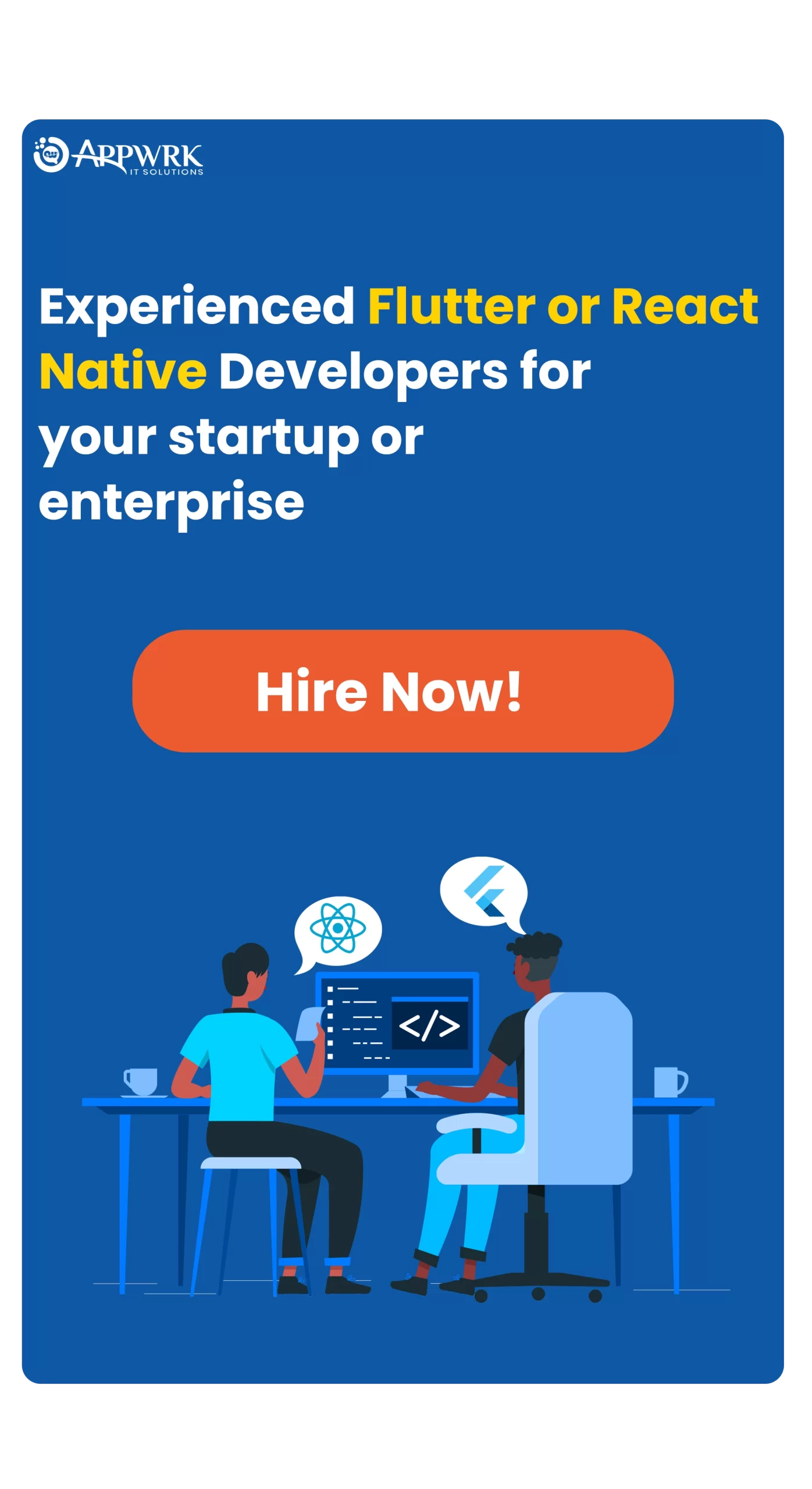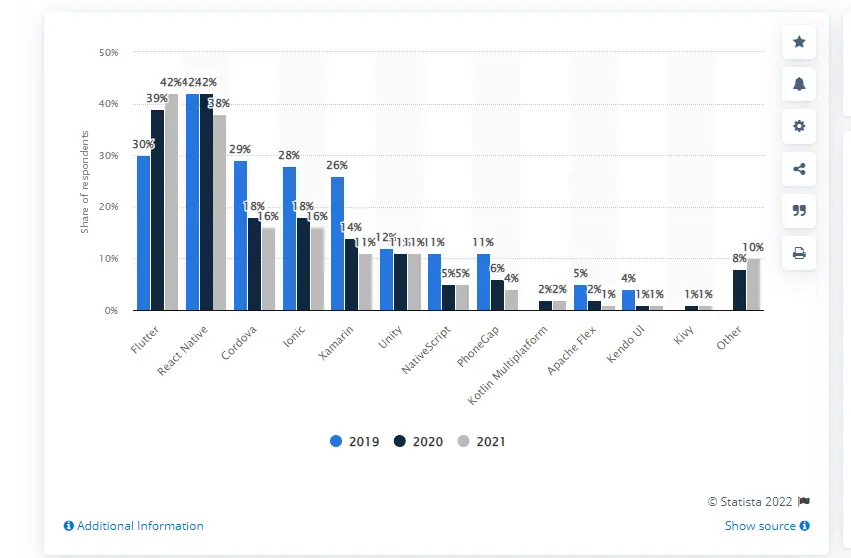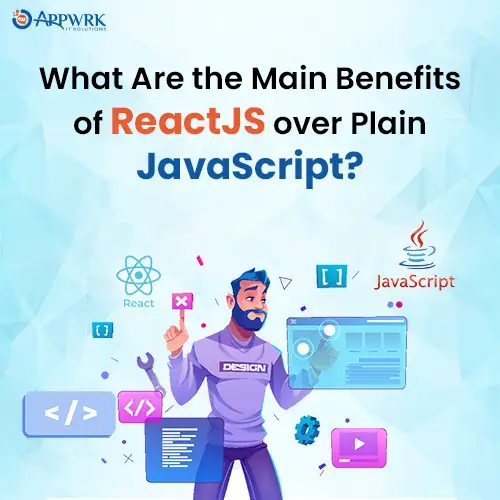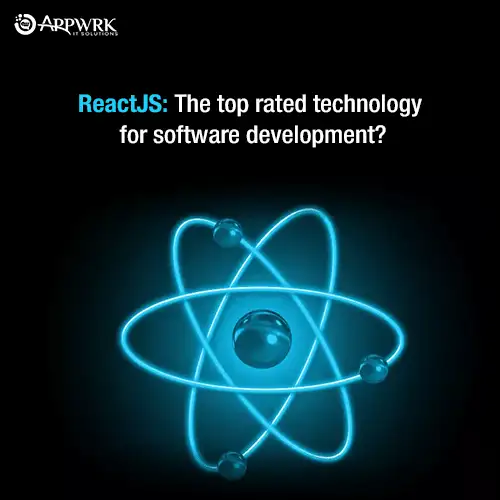Flutter vs. React Native, Which is Best in 2025?
The phenomenon of digitization has dramatically boosted with the advent of mobile app development. With just one click away, all the products and services can be entailed within a single app. Everything is readily available on these mobile applications, from product purchasing to making queries, enhancing the customer experience with an attractive user interface. In this article, Flutter vs. React Native, we will delve deep into all crucial aspects to answer one of the most critical questions for business growth through app development.
The fact that 92% of mobile users spend time with mobile applications instead of web browsers is enough for business owners to focus on mobile application development to ensure they get the chance to attract clients via various channels.
In 2025, the most prominent cross platforms for app development are Flutter and React Native, whose popularity has been rising continuously.
Now the question is-
Flutter vs. React Native which one to choose for app development in 2025?

With this article, you will get a detailed insight into both of the platforms to help you get answers to your several critical questions, including
- Which platform has a better framework?
- Which is best for the fastest time to market?
- Which one provides a better design?
- Which is more stable and user-friendly?
Table of contents
Let’s take a glance at the Flutter vs. React Native tabular comparison before diving deep into each crucial aspect:
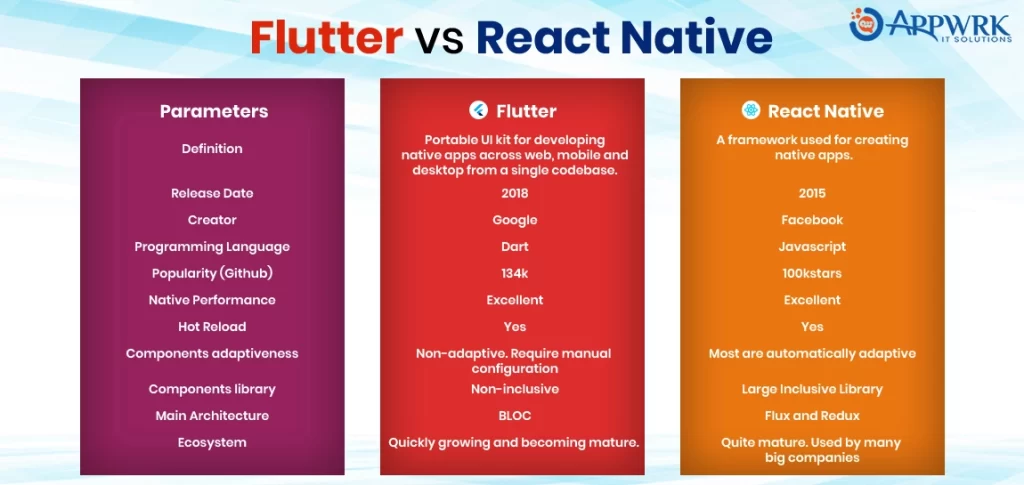
Flutter vs. React Native: Introduction
What is Flutter?
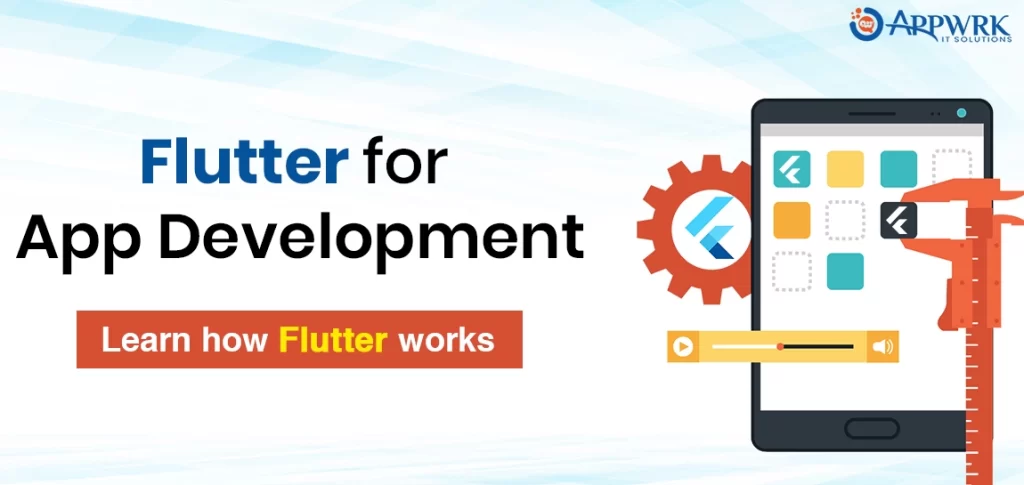
Developed by Google and introduced officially in December 2018, Flutter is an open-source technology for coding and creating native apps for both Android and iOS. This platform provides a combination of ease of development with performance while maintaining visual consistency. Flutter is an open-source and completely free platform whose programming language “Dart” was initially intended to replace Javascript. Since Flutter enables creating cross-platform applications using a single codebase, it allows organizations to develop an application using one tool that would be available on the web, mobile, and desktop. The apps created with Flutter are intuitive and easier to navigate and thus are a popular choice among companies with extensive framework requirements, Alibaba, eBay, and Google Assistant.
How does Flutter work?
The framework of Flutter includes a flutter engine, foundation library, and widgets. The approach to app development in Flutter is quite distinctive due to its declarative UI writing, where you need to start from the end. Hence before initiating the development of some element, the user needs to have a clear picture of what kind of UI it will be. Here developers can create the entire user interface by combining different widgets. Flutter also enables developers to create custom widgets fused with existing ones. To enhance the user experience by enhancing application capabilities, Flutter also offers several software packages to provide access to Firebase and Redux data warehouses.
What is React Native?
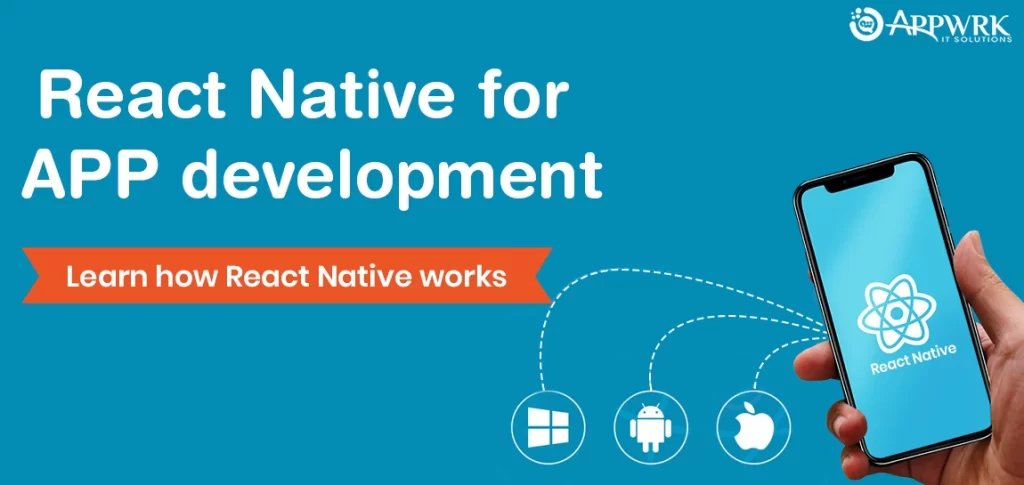
React Native is a popular javascript-based mobile framework that enables the development of natively rendered mobile applications for Android and iOS using the same codebase. Facebook developed it as an open-source project in 2015. In just a few years, react-native has become one of the top solutions for mobile app development, with Instagram, Facebook, and skype being famous examples. Since it requires creating code just once, it translates to a massive advantage with time and resource-saving.
How does it work?
React native combines Javascript and JXL(unique code resemblant of XML). This framework provides the ability to communicate with both Javascript-based and native app threads. This cross-platform development solution doesn’t render web views in its code and runs on existing native ideas and components. By bridging javascript and native lines, react-native makes bidirectional communication possible.
Flutter vs. React Native: Head-to-Head Comparison

These influencing factors are common to almost every business around the globe and would provide a clear picture to you to make better-informed decisions. The difference between React Native and Flutter is discussed below to help you understand which framework is best suited for your application.
1. Performance (Power and efficiency)
Since Flutter and React Native have different sets of languages, the results also differ in performance.
2. Mobile performance
In React Native, source code execution requires bridging from the javascript code to the device’s native environment allowing communication and data exchange. The bridge acts as an interpreter that translates JS code to the native programming language. Unfortunately, this bridge is an additional agent in this chain that requires extra time and resource allocation. Comparatively, Flutter compiles to x86 and ARM native libraries without other layers. As a result, executing the code consumes fewer resources and time. Moreover, as Flutter also has a C++ graphic rendering engine, animations are quicker and smoother in this cross-platform solution. Hence, in Flutter vs. React Native comparison for mobile performance, Flutter reigns over React Native.
3. Web Performance
When it comes to app development, React Native is king. Javascript is one of the significant front-end languages, along with C++ and HTML, having superb performance on the web. If site performance is crucial for your business, React Native is the right option to go along with as it provides technology tailored explicitly for the app.
4. Design and Graphics
Though React Native and Flutter have excellent graphic features, they follow different approaches to drawing user interfaces. React Native inherits native visual elements and appearance that provides a seamless, personalized experience. Even during operating system updates, the app elements will also update respectively to maintain feel and similarity to other native applications. The app will look similar in Flutter, irrespective of the OS version and device model. Navigation and other elements remain unchanged unless intentionally upgraded. Flutter makes implementing a standard neutral style for all devices easier to save up on project scope. When comparing React vs Flutter, React Native offers a more platform-specific experience, while Flutter provides a consistent, cross-platform look and feel.
5. Time to Market
One of the essential elements to finding out the best option among the two is time-to-market. As both Flutter and React Native are cross-platform solutions, it enables code reuse instead of coding separate independent apps.
To find out the best application engineers for your app development, here are four essential factors:
- Engineering communities for both platforms.
- Most Loved by developers.
- Cost and demand.
React Native is the older platform of the two and already has a larger community that produces huge ready-to-use packages and libraries. Flutter is younger than React Native but has ardent support from Google engineers. In this segment of Flutter, vs. React Native, both platforms have seen a meteoric rise in the past few years, and as a result, both are favorites among engineers and programmers. The only downside of React Native is that it requires connecting to third-party libraries for more features.
6. Cost and Demand
Demand is directly related to supply. The framework of React Native is based on Javascript, which many developers are already familiar with, making it easy to find the solution developer. Although Flutter developers charge comparatively less, finding one at your location is tricky. It is more prevalent among new developers than savvy ones.
7. Reliability and Support
Both the frameworks created by the world’s two biggest tech giants are open-source platforms distributed with permission-free licenses. Flutter is comparatively simple and reluctant to the changes made by operating system updates. On the other hand, React Native heavily depends on native elements for additional adaptation efforts in case of system updates. This isn’t always counted as a drawback of React Native as it is a compromise required for the native app experience.
8. Compatibility, App features
Flutter supports various resolutions on different Android and iOS devices. You might often require native development for both Flutter and React Native for advanced features. Though the writing part can address some challenges, ultimately, it leads to a decrease in the maintenance benefits of using cross-platform solutions. Widgets in Flutter and ready-made libraries in React Native enable near-native performance with complex features through native code injections.
9. Mapping and geolocation
The Google team has provided a variety of Plugins for Flutter. These plugins provide a positive experience of tracking features in the applications. Though React Native works fine with one-time tracking, some issues can still arise with continuous monitoring that can only be solved by writing parts in the device’s native programming language.
10. Camera
In terms of camera usage, Flutter was flawless. With React Native, some problems with the device’s camera usage require additional time and resource allocation to resolve and achieve desired performance.
11. Video Chats and streaming
For Flutter, an External plugin is required for custom video chats, and there are already a few ready-made paid solutions. In the case of React Native, this can be implemented natively.
12. Analytics
Both support prominent analytics solutions, including Firebase, Google Analytics, and Adjust. While Flutter didn’t face any performance issues using analytic tools, React Native performance is affected while working on multiple analytics reports.
13. Continuous delivery
Flutter provides the facility of deploying applications with a command-line interface, but this case is somehow different in CD for iOS apps requiring extra effort. Although React Native lacks an integrated tool or official documentation, it supports several prominent third-party CI/CD services, such as Fastlane, Gitlab CI/CD, GitHub Actions, and Microsoft AppCenter.
14. Security features
Both technologies can provide high levels of security for mobile apps to meet regulatory standards such as HIPAA. We recommend the following as a minimum set of measures:
- The less data that needs to be stored on the client side, the better.
- It is preferable to use fewer third-party libraries.
- Authentication tokens should expire, and extra login verification should be needed anytime the user exits the program or locks the screen.
- MFA – validating a user’s claimed identity using two or more stages from something they know is stored on mobile client data should be secured.
15. Popularity
According to the Statista survey, Flutter has replaced React Native as the most popular cross-platform mobile framework used by developers. While in 2020, React Native had 42% of users, it has been reduced to 38% in 2021. However, now in 2025, Flutter popularity has reached 42%, which is ahead of React Native by 4%. Flutter has been gradually winning the React Native vs Flutter popularity race because of it’s easy-to-use nature.
React Native is currently the leader in terms of the number of adoptions. Flutter is catching up and doesn’t lag far behind React Native in this race.
Let’s check out the top 5 applications developed with Flutter and React Native for companies working in different domains:
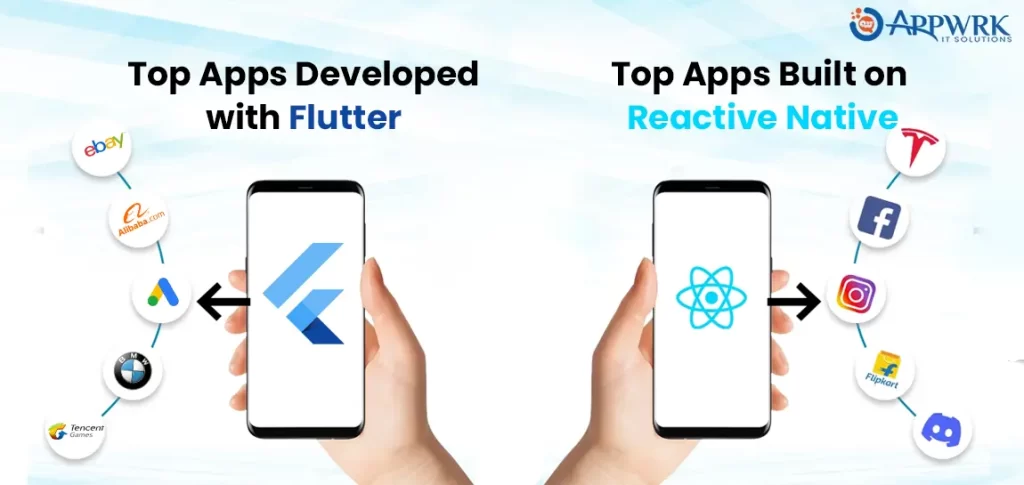
- Market Trends and Technological Evolution
Since last year, people searching for Flutter has constantly been increasing and have left React Native behind.
Upcoming development in React Native:
- Lean Core- For app size reduction by moving optional elements to separate repositories.
- Turbo Modules- For handling native modules in a better way.
- React native fabric- for re-architecting the user interface layer.
Flutter’s latest releases:
- Web support available in Beta Channel
- New Widgets and features
- Improved SDK for adding Flutter to existing Android and iOS apps.
- API changes
Flutter vs. React Native: Advantages and Disadvantages
As we dive into the comparison of React Native vs Flutter in 2025, understanding their shortcoming and benefits can be vital when it comes to selecting the right mobile app framework for your application. Flutter generally leads in terms of performance and UI customization, making it ideal for complex, visually rich apps, while React Native shines with its larger ecosystem and faster learning curve for JavaScript developers.
Flutter Advantages & Disadvantages

Advantages of Flutter
- Quick Coding- Being one of the latest platforms for app development, this technology provides a quick opportunity to deliver great performance applications.
- Hot reload- As the platform enables the developer to see applied changes in real-time, it helps to save time resulting in greater efficiency and productivity. Flutter’s hot reload provides an edge over competitors’ similar features, allowing developers to pause code execution, make changes to code, and continue coding from the same place, resulting in great speed.
- Widgets- An essential quality of Flutter is how it uses ready-made apps, ensuring a consistent development and design model. As these widgets are based on google, they provide high code quality and perform better than other open-source frameworks. Many of them are customizable, following both materials and Cupertino looks that add a significant advantage.
- Minimal Coding- The coding language of Flutter, i.e., Dart, is compiled directly into the ARM code of mobile phones, helping speed up applications and allow quicker launch. Flutter eases developers’ stress through its third-party integration and native codebase.
- Attractive User Interface- As per Will Larche (Google software engineer), Flutter’s architecture is designed to create a beautiful and customized User Interface. Its primary objective is to create customized apps with a faster interface and pleasant experience. It is a powerful enough tool that lets designers draw anything they dream up.
- Customized Design- Flutter encompasses an open-source, high-performance graphic engine called Skia that other business giants, including Adobe, Chrome, and amazon kindle, also use. This powerful tool allows users to develop custom-designed applications that provide equally good experiences on iOS and Android devices. Moreover, the risk of UI failures during software updates is eliminated.
- Similar UI across platforms- Similar UI across platforms- Regardless of the operating system, Flutter shares the same user interface and business logic on Android and Apple devices to achieve a seamless experience. This feature is crucial, especially for brands with unique and excellent corporate styles.
Disadvantages of Flutter
As there are huge advantages attached to Flutter, one cannot deny that everything comes with cons too. Flutter is one of the market’s favorites, with its shortcomings.
- No third-party libraries- Third-party libraries considerably impact software development by enabling developers with more features that are usually free, open-source, and pre-tested. Since Flutter is one of the newest platforms in the market for mobile app development, it is still improving and thus provides limited options for third-party libraries and packages.
- Large File Size- Another difficult-to-ignore disadvantage of Flutter is the large file size of apps. Every mobile user in the world needs more memory space. As many older devices can’t store additional apps, you might have to choose between an app, photos, or other files. Having a small file size offers you improved runtime and performance, which is one of the drawbacks of Flutter.
- Skill Requirement- Though Flutter is an easy language, it requires programmers to learn DART first. Creating the requirement of an additional phase of learning, Flutter can increase the time and cost of any project.
React Native Advantages & Disadvantages
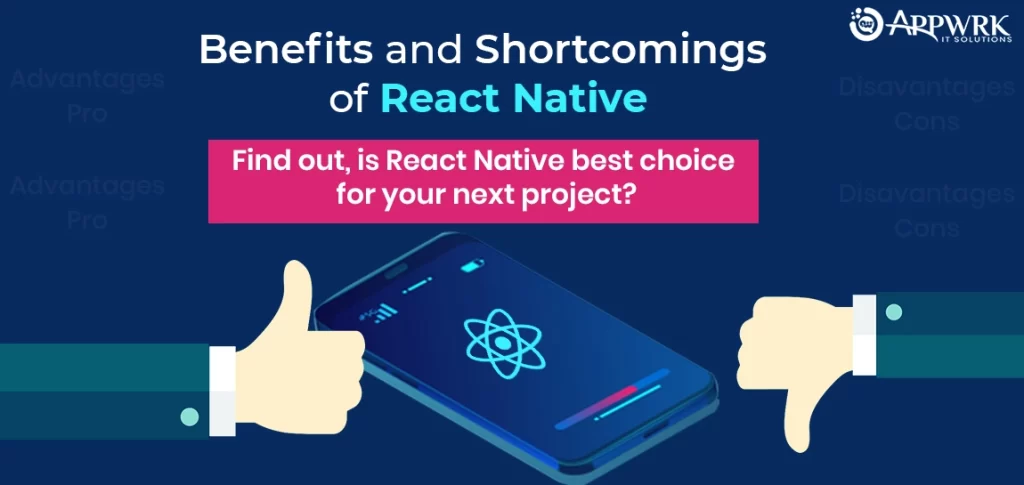
Advantages of React Native
- Optimal performance- Evaluating the effectiveness of a platform lies in performance enhancement using native modules and controls. React Native interacts with native iOS and Android components and proceeds to generate native API codes independent of any interference—using distinctly different threads from native APIs and UIs in React Native results in performance enhancement and improvement.
- Live and Hot reloading- The live reloading feature helps to compile and read the changes made by programmers. It also provides a new file to the simulator that automatically reads the application from the start. Hot reloading allows changes in the source code to let the developer view codes, even if he does not recompile the app. This feature of React Native allows the developer to instantly see results after making changes to the code, resulting in less waiting time.
- Simplified UI- React native provides a simple and less complicated user interface. Its architecture resembles an open-source network rather than a conventional one. This platform uses a software interface to remove unimportant elements to achieve appropriate sequencing for creating apps. Keeping the user experience as a focal point, apps developed with react native have more seamless UX and responsive UI and take less time to load.
- Modular architecture- A modular design and architecture enable developers to upgrade or update apps instantly. Because of its intuitive interface, React Native allows other developers to delve deeply into someone else’s project to build further or make changes. Moreover, testers require less time to understand program logic and create appropriate test scenarios.
Disadvantages of React Native
- Compatibility and debugging issues- It may come as a surprise but six years after its launch, React Native is still in beta. Moreover, as React Native is built using Javascript, C/C++, and Java, the debugging process is very complex and tiresome. To overcome this issue, you have to enable integration with Flipper, providing a set of tools for the debugging process.
- Complex User Interface- If you want to develop a mobile application consisting of numerous transitions, animations, and interactions, React Native is not the right option for you. Having a gesture responder, too, won’t help eliminate the problem, as android and iOS touch subsystems have unified APIs and are pretty different.
- Immature framework- With continuous advancements in React Native app development, developers find it difficult to adjust and adapt to the changes. React Native, in its quest to become faster, lost its credibility, becoming too mature for Android and iOS. Even the flexibility of React Native apps is below par compared to native applications.
- Harder to build a cross-platform team- Being a cross-platform technology, React Native team should be well accustomed to web technologies (Java, React) and native technologies (CI, UX technologies). It is challenging to build a team to address all the challenges that arise in developing cross-platform applications.
Flutter vs React Native: The Ultimate Truth
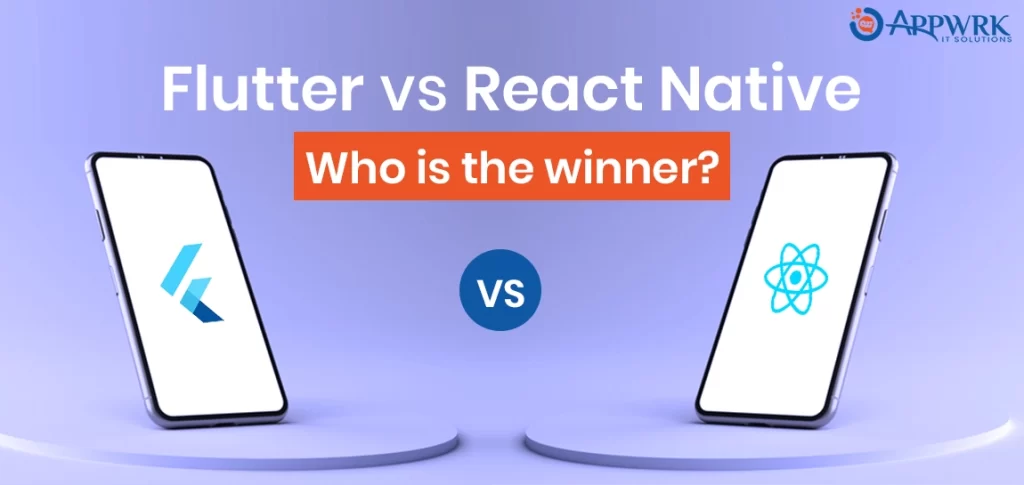
In Flutter vs. React native, the former is superior in terms of performance, app compatibility, and engineering In Flutter vs. React native, the former is superior in performance, app compatibility, engineering expense, and future market trends. When it comes to recruiting software developers, though, React Native is superior. The availability of qualified engineers has a direct impact on time to market. This is critical for many businesses when selecting the right technology for an app.
Flutter vs. React Native: What do APPWRK Developers Think about it?
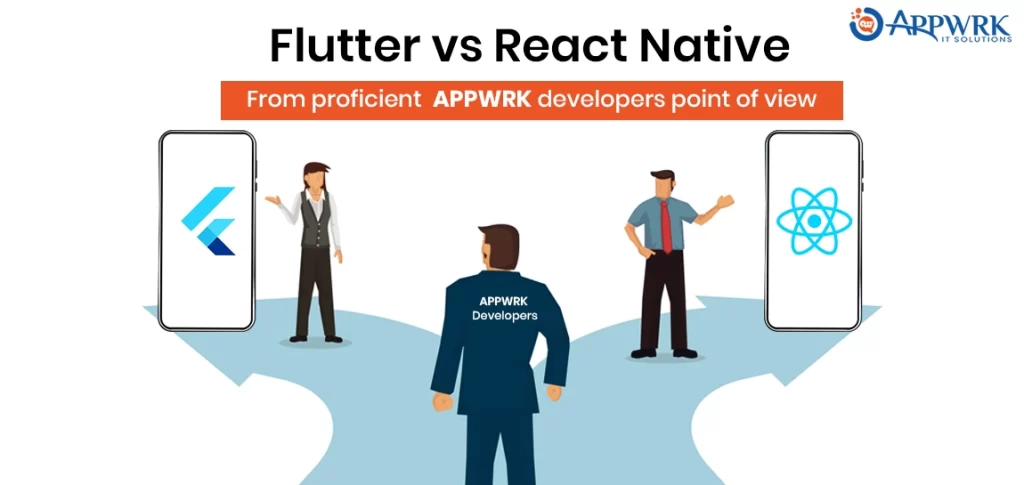
React Native is a fantastic fit for applications with basic functionality and comparable entities, such as events, social media, eCommerce, and loyalty programs. If you’re a well-established company with a sizable client base and a mobile app isn’t your main product, React Native is a good option because it allows you to sell native-looking apps much faster. Flutter is ideal for interesting new projects involving sophisticated computations and animations and when the functional side of things is more important than the aesthetics. It’s a brilliant idea for early-stage software firms to construct a visually appealing proof-of-concept with the bare minimum of essential functionality on a shoestring budget, find product-market fit, and then scale.
Conclusion
Compared to different parameters, Flutter vs. React Native has no clear winner. As each project is unique, choosing the right framework depends solely on your project parameters and business demands.
For bigger applications and apps that need native Programming, Flutter is the best option. React Native fits well for the apps that can gain from plug-and-play modules. You need to remember that each application is unique, and you must evaluate each one individually. It’s always worth talking to an experienced team of developers about your project: people who are capable of considering various approaches and have a diverse enough skill set for cross-platform development. Asking a programmer’s opinion who knows only one framework might steer you in the wrong direction.
Flutter and React native are unique mobile app development solutions with a wide popular base. Each framework can help your application touch people’s hearts with different approaches. If you still have doubts, you can hire flutter developers or hire React Native developers from APPWRK!
Frequently Asked Questions
A. Flutter and React Native is cross-platform app development solutions designed to encompass today’s business requirements. Choosing either of them will ensure the following:
Reusable code
Cost reduction
Faster deployment
Support to various platforms
A. React Native and Flutter are the product of two technology giants, i.e., Google and Facebook. Moreover, regular updates for both platforms to adapt to changes make it future-proof and will be the favorites among developers in the long run.
A. The Flutter framework comprises UI rendering components, device access APIs, navigation, and testing. In contrast, React Native must rely on third-party libraries to access most native modules. Hence in Flutter vs. React native, for a better User interface, you should always opt for Flutter.
A. Flutter is a basic framework resistant to changes brought about by operating system updates providing more reliability. React Native, on the other hand, relies on native elements for additional adaption efforts in the event of system changes making it less secure and reliable.
Learning Flutter provides developers with exposure to Dart, fostering skills that are transferable to other areas of software development. Is Learning Flutter Worth It? In conclusion, the resounding answer is yes—learning Flutter is undeniably worth it.
The main difference between React Native and Flutter lies in their underlying technologies, such as React Native uses JavaScript, while Flutter uses Dart.
The choice between React Native vs Flutter depends on project requirements. You can opt React Native if you want to leverage existing JavaScript knowledge and focus on a more native look and feel, while Flutter excels in providing a consistent UI across platforms and offers superior performance with its custom rendering engine.
React vs Flutter differ in several key aspects, such as their programming languages (React uses JavaScript, while Flutter uses Dart), development approach, and performance. React Native offers a more native experience with platform-specific components, whereas Flutter provides a consistent UI across platforms with its custom rendering engine.
Yes, Flutter popularity is expected to continue rising, particularly as Google continues to improve its capabilities and the demand for cross-platform development grows.
Related Links:
About The Author
